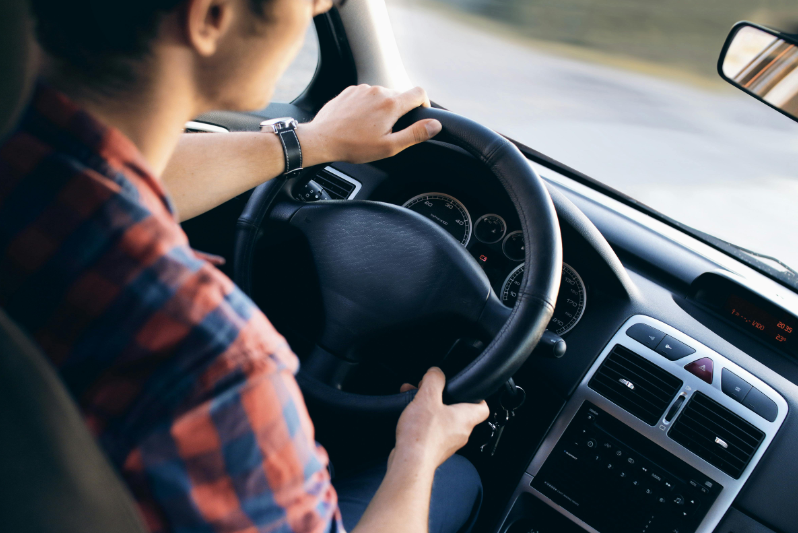Introduction: Why knowing how to use anti-lock brakes (ABS) matters in emergencies
It can save lives to know how to apply anti-lock brakes in an emergency. Anti-lock braking systems (ABS) help maintain steering control, reduce skidding risk, and ensure maximum braking efficiency during urgent stops. Yet, many drivers misuse ABS or panic when it activates. This guide offers a full overview for UK drivers, covering what ABS is, how to use it properly, and how to maintain it.
What is an anti-lock braking system and how does it work?

How does ABS prevent wheels from locking?
ABS works by detecting when a wheel is about to lock during braking. Each wheel has a speed sensor. When the sensor detects that a wheel is slowing down too quickly and may lock up, the ABS temporarily reduces braking pressure to that wheel. This is done in rapid cycles, allowing the wheel to keep turning and helping the driver maintain steering control even during emergency braking.
What components make ABS effective?
An ABS system includes:
- Wheel speed sensors that track the rotation of each wheel
- Hydraulic valves to control brake pressure
- Electronic control unit (ECU) to process sensor data and regulate braking
- Brake actuator to apply controlled pressure
All these components must function together. If any one of them fails, the system may not work correctly.
How should you use anti-lock brakes in an emergency stop?
How to apply brakes in emergency with ABS?
In an emergency, apply the brake pedal firmly and consistently. Do not pump the brakes, and do not release pressure when you feel pulsing or vibration—this is ABS engaging. Keep the steering wheel steady but be ready to make controlled directional changes to avoid obstacles. In manual cars, press the clutch simultaneously to prevent stalling.
- Stay calm and focus on the road ahead.
- Maintain straight-line braking unless steering to avoid a collision.
- Let ABS do the work—trust the system and do not interfere.
What does the Highway Code advise?
The UK Highway Code’s Rule 120 advises depressing the brake pedal firmly and holding it there until the car has completely stopped. This rule is specific to vehicles equipped with ABS, as it allows the system to manage braking pressure. You can manoeuvre your car and avoid obstacles when stopping when ABS is on.
- Provides optimal stopping force by allowing ABS to regulate pressure without interference.
- Helps avoid panic-induced errors such as pumping the brakes or oversteering.
Should you press the clutch when braking in a manual car?
Yes. If you’re driving a manual car, press the clutch pedal at the same time as the brake pedal during an emergency stop. This prevents the engine from stalling and ensures the car doesn’t lurch, giving you full control. If you delay clutch engagement, the engine may stall and the stop may be less controlled.
- Enables more stable deceleration, especially at high speeds.
- Reduces wear and tear on the drivetrain by avoiding abrupt gear shifts under braking.
How long should you maintain brake pressure?
Apply firm and constant pressure to the brake pedal. Do not ease off when you feel the brake pedal vibrating or pulsing—this is a sign that ABS is working properly. Releasing the brake early can reduce the system’s effectiveness and increase stopping distance.
- Maintains a consistent ABS cycle for optimal braking control.
- Allows you to steer around obstacles while braking effectively.
What role does muscle memory play in maintaining brake pressure?
Developing muscle memory through consistent practice ensures that drivers instinctively apply the correct pressure during emergencies. This automatic response can be the difference between a safe stop and a collision.
- Reinforces quick reaction time, reducing hesitation in high-pressure scenarios.
- Builds confidence in handling unexpected road events with composure.
How does brake pressure influence steering control?
Consistent brake pressure allows ABS to function correctly, which directly supports steering control. Variations in pressure can disrupt the ABS cycle, potentially reducing the driver’s ability to steer away from obstacles.
- Enhances vehicle responsiveness, particularly during sudden swerves.
- Minimises lateral tyre slip, improving directional stability under pressure.
How do you recognise an emergency braking situation?
Any scenario where immediate braking is necessary to prevent a collision is considered an emergency. This can include a pedestrian stepping into the road, a sudden stop by the vehicle in front, or unexpected debris on the road. The key is to brake decisively and not hesitate, allowing the ABS to engage quickly.
- Sudden changes in traffic flow, such as abrupt lane changes or merging vehicles, also qualify as emergency scenarios.
- Inclement weather like heavy rain, fog, or ice may increase the need for abrupt braking and ABS activation.
What are common mistakes and misconceptions about ABS?

Why should you not pump the brakes with ABS?
In vehicles without ABS, pumping the brakes was a technique used to prevent wheel lock-up. This is not required in contemporary cars with ABS, though. Pumping the brakes confuses the ABS system and interrupts its ability to adjust brake pressure effectively. Always apply firm, consistent pressure.
- Interferes with the sensor’s precise wheel speed detection.
- Can result in greater stopping distances and worse braking performance.
What does the pedal vibration mean?
Pedal vibration or pulsing is completely normal during ABS activation. It’s caused by the rapid opening and closing of hydraulic valves within the system. This feedback lets the driver know the system is working and adjusting brake force in real time.
- Warns the driver to keep the pressure constant without question.
- Acts as a tactile reminder that steering ability is still available during the stop.
Does ABS always shorten stopping distance?
ABS typically shortens stopping distances on dry and wet roads. However, on loose surfaces like gravel, sand, or snow, it may slightly increase stopping distance. The main advantage in these circumstances is that ABS enables steering and obstacle avoidance while braking.
- Helps prevent loss of control that commonly occurs on slick or uneven terrain.
- Supports safer manoeuvring during unpredictable off-road or rural driving conditions.
What if your ABS warning light stays on?
What does the warning light indicate?
An illuminated ABS warning light on the dashboard indicates a malfunction within the system. While you can still use regular brakes, the anti-lock feature will not be available. This increases the risk of skidding during hard braking.
- Indicates the vehicle is no longer equipped with enhanced steering control under hard braking.
- Suggests that electronic components or sensors may need inspection or replacement.
How should you brake if ABS isn’t working?
Without ABS, you must manually modulate braking pressure to avoid wheel lock-up. Apply the brakes progressively, reducing pressure slightly if you feel the wheels begin to lock. This method requires skill and is less effective than a working ABS system. Seek repair as soon as possible.
- Requires increased physical coordination and driving awareness while under pressure.
- Raises the possibility of skidding, particularly on slick or uneven roads.
What advantages and limitations should you know about ABS?

What are the key benefits?
- Improved vehicle control: Maintain steering during braking
- Reduced risk of skidding: Prevent wheel lock-up
- Better handling in emergencies: Confidence under pressure
- Enhanced safety: Beneficial on icy or rainy roads
What are the limitations?
- Greater stopping distances on slick terrain, such as mud or gravel
- Driver overconfidence: Relying too much on ABS and ignoring safe distances
- Sensor sensitivity: Malfunction from dirt, debris, or wear
- High maintenance costs: Repairs and diagnostics can be costly
How does ABS function across vehicle types?
Is there a difference between manuals and automatics?
| Transmission Type | ABS Operation | Driver Action Required |
|---|---|---|
| Manual | Identical | Press brake and clutch simultaneously to avoid stalling |
| Automatic | Identical | Press brake firmly; no clutch needed |
What about heavier vehicles?
Larger vehicles like SUVs and lorries have longer braking distances due to their mass. However, ABS remains effective, and many commercial vehicles include advanced ABS settings for off-road or towing. It’s essential to understand your specific vehicle’s braking behaviour.
How can you practice emergency stops with ABS?

Where can you safely practise?
Safe practice locations include:
- Empty car parks
- Closed driving ranges
- With professional driving instructors
Avoid public roads for emergency stop practice unless guided during a lesson.
What should you focus on?
- Braking from moderate speed (30-40 mph)
- Maintaining firm pressure without hesitation
- Not reacting to pedal vibration
- Light steering inputs during braking to maintain control
Practising helps you build muscle memory and reduces panic in real situations.
How do you maintain your ABS for emergencies?
What should be checked regularly?
- Brake fluid level: Ensure it’s topped up
- Wheel sensors: Clean and free of debris
- Warning lights: ABS light should illuminate briefly on startup, then turn off
What are signs your ABS may be failing?
- ABS warning light stays on
- Brakes feel inconsistent
- Pedal feels spongy or unresponsive
Prompt diagnostics and repair are crucial for maintaining system integrity.
Table: ABS effectiveness across surfaces
| Surface | ABS Advantage | Possible Limitation |
| Dry tarmac | Shortens stopping distance | Minimal |
| Wet roads | Maintains control | Slightly longer stop |
| Gravel or snow | Prevents wheel lock/skid | May increase stop distance slightly |
| Mud or uneven ground | Better than locked brakes | Not always efficient for stopping |
Conclusion: How should you use anti-lock brakes when you need to stop in an emergency?
To stop safely using ABS, press the brake firmly and keep your foot down. In manual cars, simultaneously depress the clutch. Don’t be alarmed by pulsing or vibration in the pedal—this is how ABS works to prevent lock-up. Trust the system, maintain control, and practice regularly to improve your confidence and responsiveness.
FAQs
Should I use the clutch during emergency braking?
Yes, especially in manual cars. Pressing the clutch prevents engine stall and keeps the braking smooth.
Why does the brake pedal vibrate?
This is the ABS activating. It makes sure you can steer when stopping and adjusts the amount of braking force.
Does ABS always reduce stopping distance?
Not always. On dry roads, yes. On snow or gravel, stopping might take slightly longer but you’ll retain control.
What if the ABS warning light comes on?
It means ABS is not working. Your standard brakes are still operational, but you should get the system checked.
Can I practise an emergency stop before my test?
Yes, and it is recommended. Practice improves confidence and familiarises you with ABS feedback.
I’m Laura Wilson, a passionate blogger and content creator with a deep interest in business, finance, and entrepreneurship. I’ve had the opportunity to write for several premium blogs, sharing insights & practical advice for individuals & small businesses. I’m the founder and publisher of ukbusinessmag.co.uk, where I focus on creating valuable, easy-to-understand content to help UK startups & SMEs grow.



